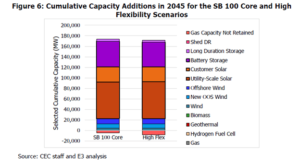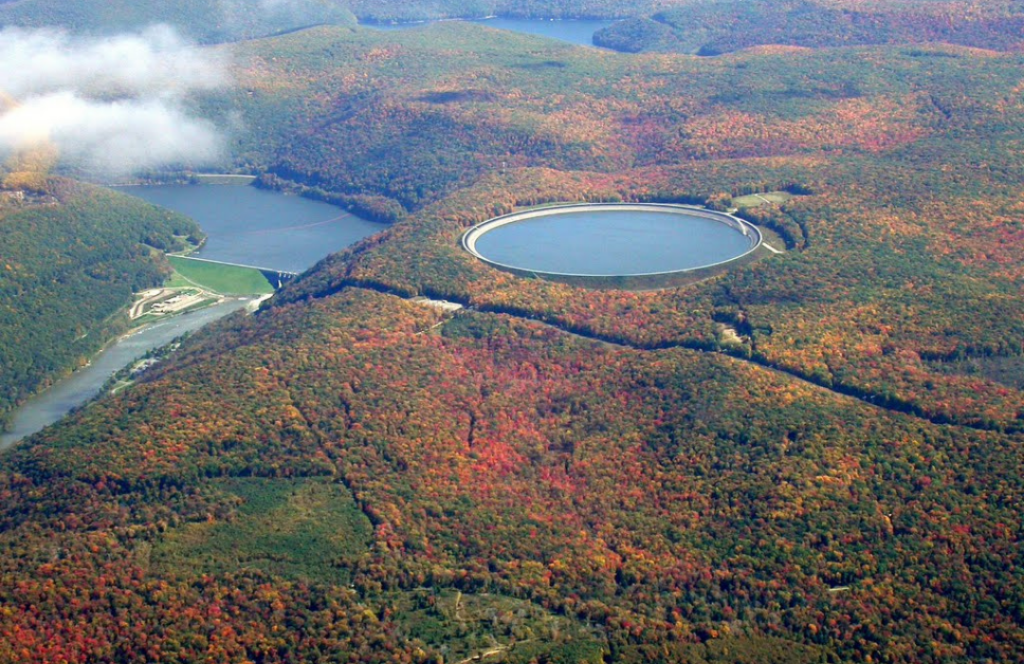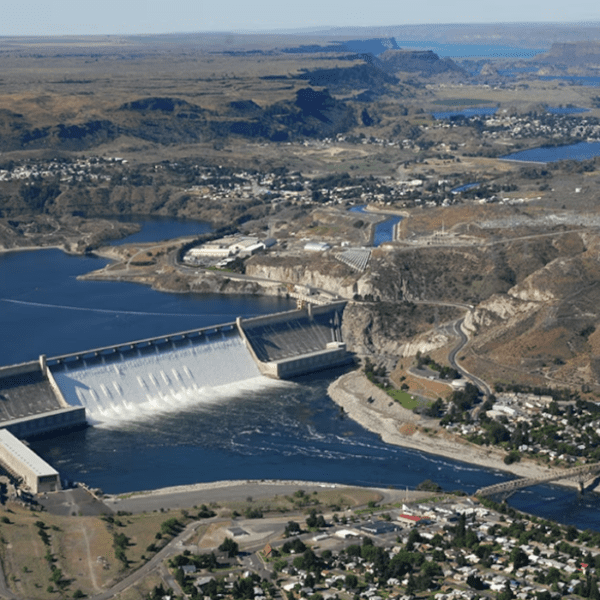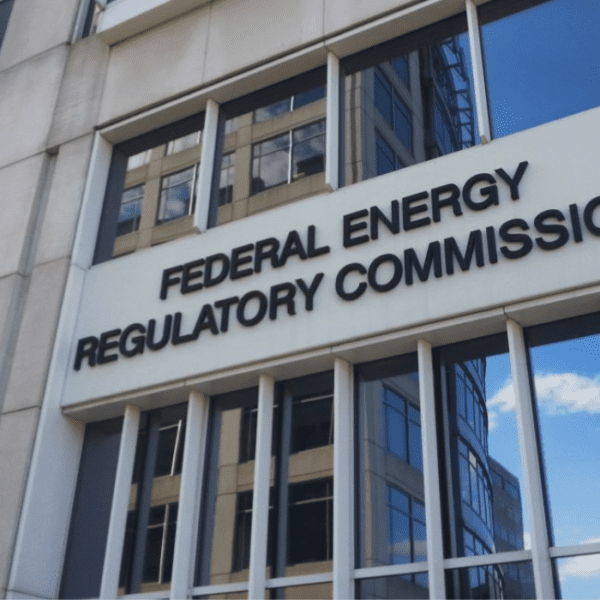Several California state agencies recently completed a modeling exercise on how to achieve a zero-carbon grid by 2045. Like weather forecasting, electric grid modeling is not an exact science, but it can be a useful exercise.
The forecast for hydropower? Retention of existing resources and some modest growth in pumped storage.
Meanwhile, an additional 100 GWs of solar and 10 GWs of wind are on the horizon, supported by 50 GWs of batteries. The graph below – extracted from the report – shows expected capacity additions by technology.

The forecast is based on a model, which is designed to predict a renewable and reliable grid at least cost by defining the attributes and costs of technologies under different scenarios. The graph above is only one of the scenarios they modeled for, but the main difference between these scenarios are their names, not their findings.
NHA’s Key Takeaways from the Report
Is 100% Zero-carbon Possible? Yes.
Total Costs: $50 billion to $60 billion over the next 25 years
Zero-Carbon Resources: Hydropower, wind, solar, and other resources that generate zero greenhouse gas emissions on site.
Flexibility: even a modest amount of flexibility can significantly decrease overall costs to achieve zero carbon.
Pumped Storage: 1.7 GWs of pumped storage growth are possible, but not guaranteed. The report uses the financial advisory and asset management firm Lazard Ltd. and the National Renewable Energy Laboratory (NREL) for storage cost data, both of which are deficient in pumped storage cost analytics. The existing 4.5 GWs of pumped storage are assumed to be retained.
Conduit Hydropower: Conduits are eligible, but were excluded from the report due to a lack of cost data. A previous state report identified 400 MWs of conduit hydropower potential, but was either ignored or forgotten in this report.
New Hydro at Existing Dams: The report does not mention anything about adding hydropower components at existing dams already impounding water for water supply, irrigation, and recreation in California, but the U.S. Department of Energy (DOE) estimates more than 100 MWs of potential new capacity could come from adding power components at existing dams in the state.
Marine Energy: The report does not mention marine energy either, but at the time the report was developed, the DOE estimated marine energy could provide 10% of the state’s energy needs.
Hydropower Imports: The report assumes a constant supply of between 1 GWs and 2 GWs of hydropower imports from the Pacific Northwest.
Licensing/Permitting: Existing licensing and permitting practices are too slow to match the necessary growth rate.
Land Use: Wind and solar need hundreds of thousands of acres of land, whereas conduits and new hydro capacity at already-in-operation dams use existing infrastructure.
Why the California Exercise Matters?
California is one of the first states with a plan for 100% zero-carbon. It’s also the fifth largest economy in the world. Lessons from California will trickle into every clean energy debate across the other 49 states.
The report now goes to the California state legislature for their consideration and possible action.
Recommended Next Steps for the Waterpower Industry:
- Tell hydropower’s story in the recent California blackouts. Then tell it again. And again. And again. And tell other people to tell it, too.
- Defend every MW of hydropower flexibility in licensing proceedings
- Give Lazard and NREL accurate pumped storage cost data
- Re-amplify the 400 MWs of conduit hydropower potential in California, along with new capacity at existing dams and marine energy deployments











